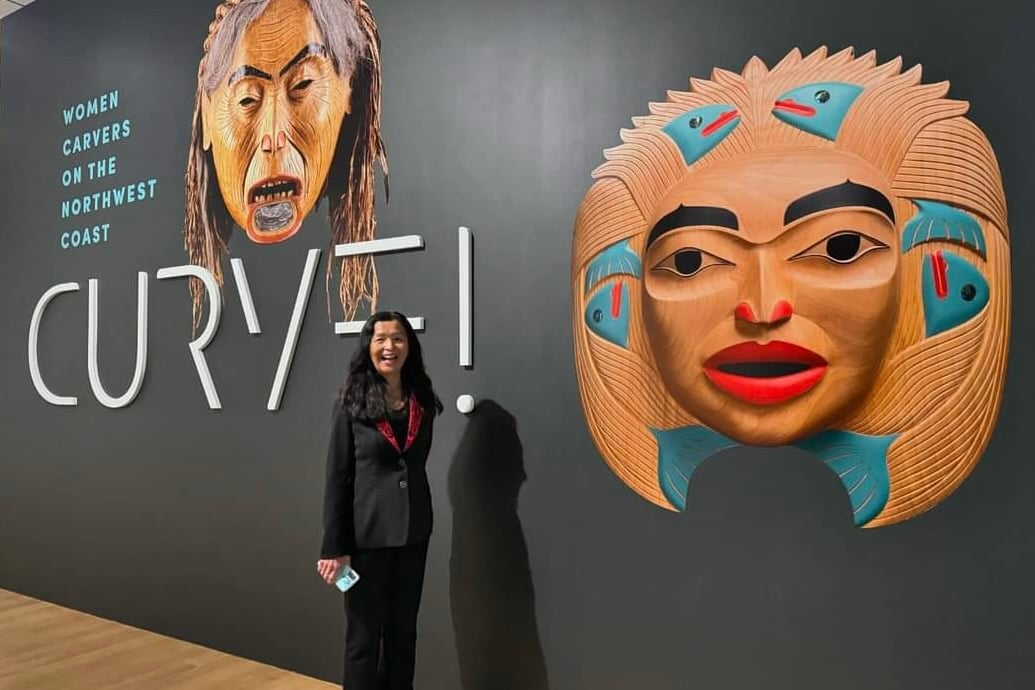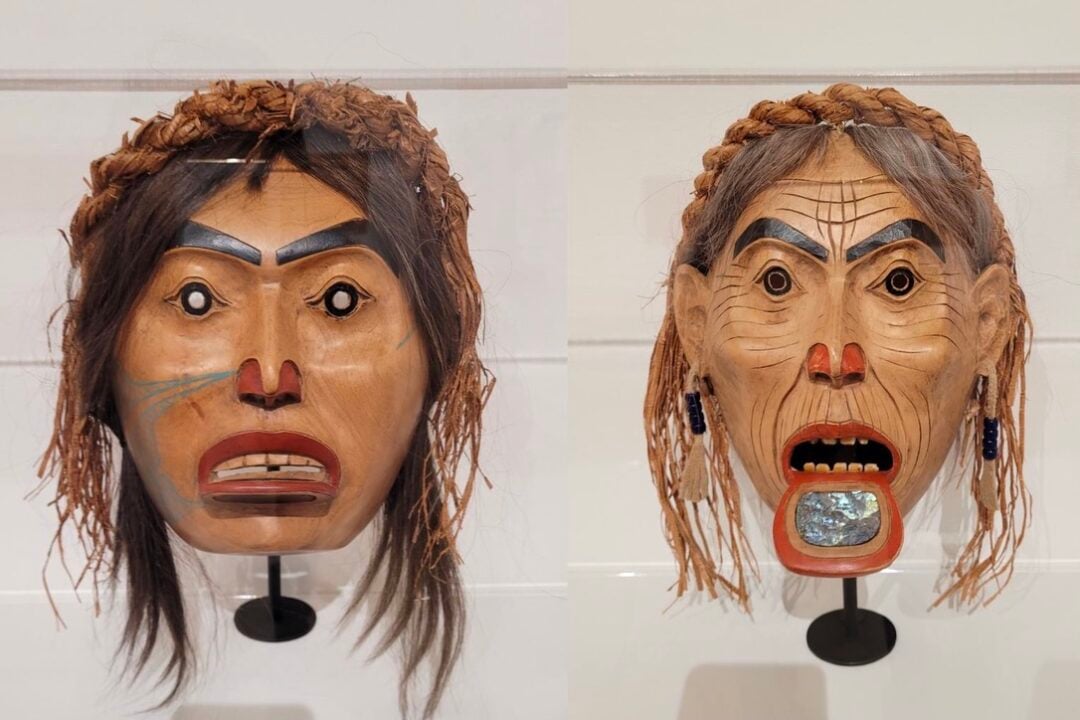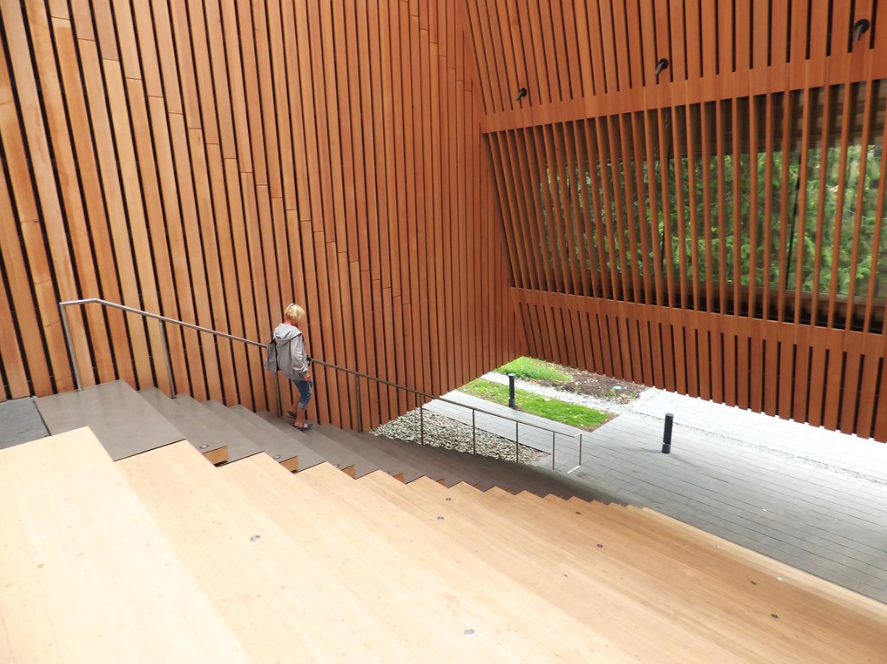Radha Agarwal, Local Journalism Initiative, The Northern View
A new publication and exhibition in Whistler illustrates an 80-year overview of wood and argillite carvings by the Indigenous women of B.C.’s northwest coast.
“The exhibition features 127 works of art that include poles, panels, masks, bowls, and other sculptures all intertwined with traditional knowledge,” said the Audain Art Museum.
“Curve! Women Carvers on the Northwest Coast” is co-curated by Dana Claxton and Curtis Collins. A group of 14 artists representing different generations and varying levels of expertise has produced the work. These include Ellen Neel, Freda Diesing, Doreen Jensen, Susan Point, Dale Campbell, Marianne Nicolson, Arlene Ness, Melanie Russ, Marika Swan, Morgan Asoyuf, Cori Savard, Cherish Alexander, Stephanie Anderson, and Veronica Waechter.
The oldest artist in the group was born in 1916, and the youngest in 1995. This historic exhibition showcases the evolution of the craft over the century.
“In my 50 years of carving. I’ve only participated in three all-women art show exhibits—that’s all!”
Dale Campbell
The publication highlighted that although women carvers of the northwest coast have played a crucial role in preserving traditional arts and had a long history of carving poles, canoes, panels, and masks, they have not received the same recognition outside their communities as their male counterparts.
This exhibition and book aim to broaden the discourse of carving in the region.
The 70s
Dale Campbell (70) is Tahltan and a long-term resident of Prince Rupert. Her masks, headdresses, a rattle, a paddle, and a totem pole, were created over five decades and are on display at the Audain Art Museum in Whistler until May 5, 2025.

“In my 50 years of carving. I’ve only participated in three all-women art show exhibits—that’s all! It’s not very popular, not happening really,” she said.
Campbell began her artistic journey in carving in 1972, when specialized art schools were scarce, and women had limited access to formal art education. Dempsey Bob, a well-known artist, informed her that Freda Diesing, a local Haida artist was willing to offer them free carving lessons behind the gallery in Prince Rupert. Upon learning about this opportunity, Campbell became very excited.
“I thought, Okay, I’m gonna go down and give it a try. And, oh my god! I just absolutely loved it!” said Campbell delightedly. “I was really creative. I did all kinds of different types of artwork but nothing really stuck like the way carving did.”
“It was things that I wanted to take in high school, like drafting and metalwork and woodwork. But girls in the 70s weren’t allowed to take those courses. They had to take cooking and sewing and stuff like that,” she added.
“There [were] more men that carved because it’s a lot easier for them to do it than for women,” she said.
“Whereas a man, they have a woman that does all that, and all they do is have their lunch and then go back to work. You know, it’s completely different.”
Dale Campbell
Campbell gave a talk in Whistler about the different experiences of men and women in the art world. She says while men had the opportunity to dive straight into their work, women were busy managing the household, taking care of kids, and handling everything else before even thinking about art.
“Whereas a man, they have a woman that does all that, and all they do is have their lunch and then go back to work. You know, it’s completely different,” she added.
Campbell shared a story about one of the greatest male artists, Charles Edenshaw from Haida Gwaii. He struggled with arthritis and his wife ended up doing a lot of the painting and finishing for him. But it was not formally recognized or spoken about. It may be almost common knowledge in their community, but no one on the outside heard about it.
“I also encountered some men that were learning to carve around [the] same time as me, saying ‘you shouldn’t be doing this.’ Traditionally, this is not a woman’s thing. And yeah, it was always the man that got to do the artwork.”
Making Art
Freda Diesing guided Campbell and Bob with traditional designing, drawing, and drafting a 30-foot totem pole and also making their own tools such as knives.

Campbell says there are specific rules for traditional design, and those trained in this method often create stunning work. In contrast, designs lacking this foundation are typically easy to recognize as they fall short of traditional standards.
Diesing began with teaching Campbell how to draw shapes like ovoids.
“It looks like a bean shape, but it’s a main component of designing northwest coast art, and also U shapes,” she added.
Some of the younger artists in the exhibition graduated from Freda Diesing School of Art in Terrace, which opened in 2006.
“They used the traditional design, but they have developed their own styles, and they’re not afraid to just go at it,” said Campbell.
She observed that, over the years, the progression of the artwork has become increasingly refined and diverse. She has evolved by incorporating new elements into her pieces, adding her perspective to traditional designs.
Campbell’s mask “Woman Who Brought the Salmon,” created in 2021, is made of alder, abalone, and pigment. It has been featured on the cover of the book and in advertisements for the “Curve!” exhibition.
“I haven’t seen everything either, but I’ve never seen a guy’s design like that, like it’s more… original.”
Dale Campbell
She describes her mask design as featuring a “salmon woman,” symbolizing the connection between the salmon, ocean, and rivers. The flowing hair represents these waters, with salmon emerging from it. At the top of the mask, the splashes resemble waves crashing onto the beach, capturing the dynamic movement of the ocean.
“I haven’t seen everything either, but I’ve never seen a guy’s design like that, like it’s more… original.”
Each piece she designs illustrates an old traditional story. This particular mask was inspired by a Tlingit story passed down through generations.
“It’s a story about these men that left their village, they were going hungry because there was no salmon coming up the river. And so they went out looking in their canoes, and they came upon a young, beautiful young lady sitting on the shore, and the chief’s son saw her, and he just went, “Oh my god, wow! He fell madly in love with her. And so they went and approached her and stuff, and she ended up going back to the village with them. And she ended up marrying him.
“And what happened was the salmon started coming back. Salmon came with her, up the rivers. And then he started to treat her badly and she just thought to herself, ‘Well, I’m leaving’.
“And she left, she left him, she left the village, and the salmon left with her.”

This was the shortest version of the story that Campbell could share, and said the reason they had all these traditional stories was to teach young people lessons about life.
“If you think about that story I just told you, it’s about a woman [who] was dishonoured and she did not take it, she left. She didn’t stay there and keep taking it. So it’s a story of strength that the young people can learn that you got to have strength to do what you deserve to have.”
Every piece Campbell designs is an original and she never makes another copy of it.
“Woman Who Brought the Salmon” was sold to a private collector. She finds that these stories attached to the artwork give great meaning to the people who end up owning the piece.
Campbell was overjoyed when she entered the Audain Art Museum and saw the enlarged photo of her mask eight feet across the wall.
“I was just, ‘ah!’ [I] couldn’t stop smiling,” she laughed. “Just so happy. It’s such a big, big honour, and the size of the mask printed on the thing, it’s so big! You should see some of the work. I mean, you can tell it’s been done by a woman. It’s so fine, and it’s so finished and looks so beautiful.”







